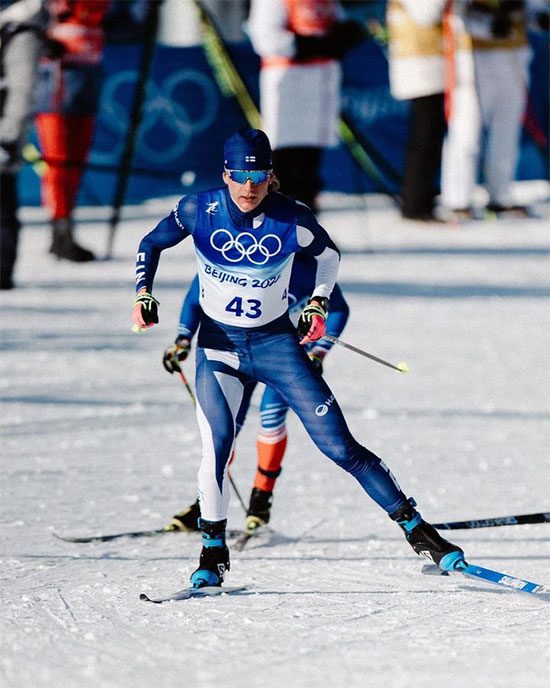Remi Lindholm, a Finnish cross-country skier, reported that his “manhood” was frozen due to frostbite from the frigid weather during the 50 km race last Saturday.
Frostbite is an injury caused by prolonged exposure to extremely cold temperatures. It affects the skin and underlying tissues, with extremities being the most vulnerable areas. The frostbitten areas typically include fingers, toes, face, and ears, which can become exposed in cold weather, leading to long-term damage.

Cross-country skiing requires athletes to endure long distances in harsh weather.
In the case of the Finnish skier, he experienced frostbite on his “manhood” during the race, as his clothing and equipment were insufficient to protect this particularly sensitive area from the biting wind.
Temi Lindholm needed a heating bag at the end of the race to warm up his frozen sensitive area, according to Reuters. Reports also indicated that this skier completed the 50 km course in about one hour and 16 minutes amidst “howling winds and freezing temperatures.” This was not even Lindholm’s first experience of frostbite in that area, as he had a similar grueling experience in Ruka, Finland, last year.
“You can guess which body part was a bit numb when I finished the men’s 50 km at the Olympics… it was one of the worst competitions I’ve ever participated in,” Lindholm told Finnish media. “It was entirely a battle to get through.”
The organizers subsequently delayed the start time by about an hour and shortened the distance to just 30 km due to concerns about the risk of frostbite for other athletes. A weather report two hours before the race indicated temperatures at 3ºF (-12.77ºC), with wind speeds reaching 50 km/h. The wind chill made it feel like -21ºF (-29.44ºC).
How the “manhood” frostbite incident occurred

Remi Lindholm.
Competitors often wear thin, minimal layers during skiing events, including cross-country races. They have face and ear coverings. However, all of this equipment is often insufficient to provide adequate protection in the extreme cold they typically endure.
Lindholm stated that he used a heating bag to thaw his frozen “manhood” after the race ended. That’s when he began to feel pain. He said: “When the body parts started warming up after finishing, the pain was unbearable.”
Frostbite can stealthily set in without the victim realizing it. Cold weather and wind can also harm body parts covered by clothing, which is what happened to Lindholm.
The early stages of frostbite involve numbness, which does not lead to permanent skin damage. Warming up this area will lead to pain and tingling. Specifically, frozen “manhood” can be particularly painful due to the sensitivity of the organ.
More severe cases of frostbite will require medical attention and can lead to life-threatening complications. Some extremities may suffer necrosis and need to be amputated. Fortunately, that was not the case for Lindholm.
Interestingly, modern medicine has successfully performed the first “manhood” transplant, and this medical procedure has shown that the organ can still function quite effectively.



















































